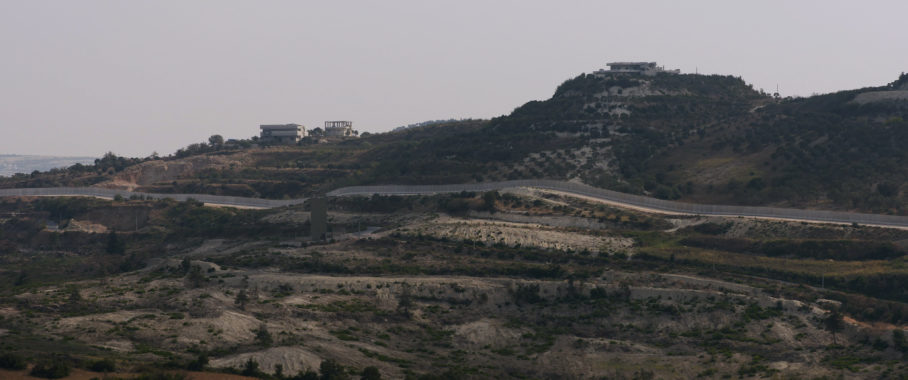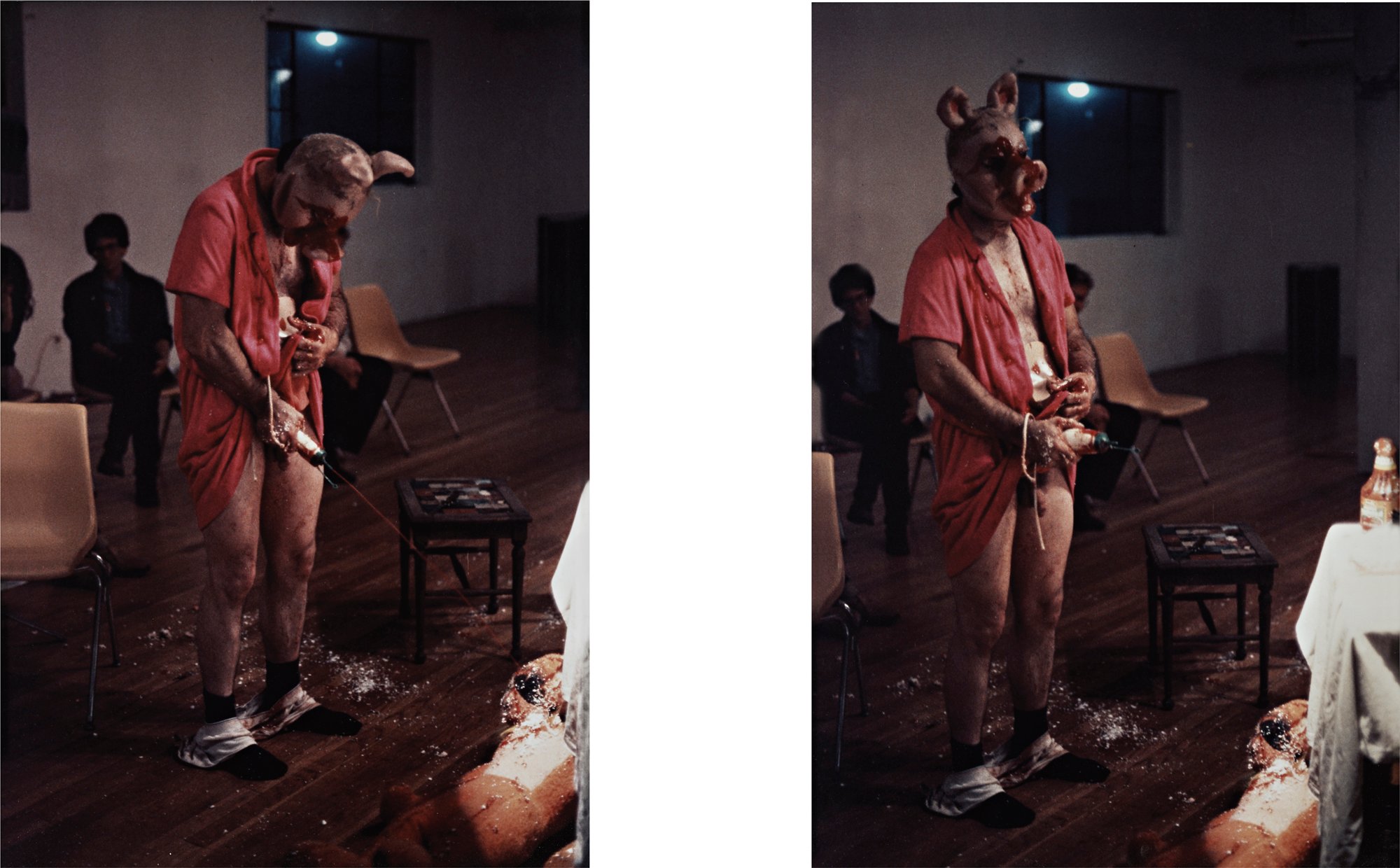
© » KADIST
Eric Baudelaire
In a society saturated by images, Eric Baudelaire is interested in political events that have not found their representation. For the film The Anabasis of May and Fusako Shigenobu, Masao Adachi and 27 Years without Images, Baudelaire conducted research on 1970s Japanese cinema and more specifically on Wakamatsu and Masao Adachi’s filmography. In 1971, as the two legendary filmmakers of Japanese Nouvelle Vague were on their way home from a presentation at the Cannes festival, they stopped in Beirut, where their thinking concerning the image took the form of political activism.

© » KADIST
The Atlas Group
This image is an extract from a notebook in the archives of doctor Fakhouri that lists the cars that have been used for bombs between 1975 and 1991. Each page of the notebook contains a collage of an image of a car with the same make, model and color as the exploded car with a text in Arabic that gives the details of the place, time and date of the explosion, the number of people in the accident, the perimeter of destruction, the weight and the type of explosive. The images of the cars made visible are only equivalents since the cars that actually exploded are totally destroyed.
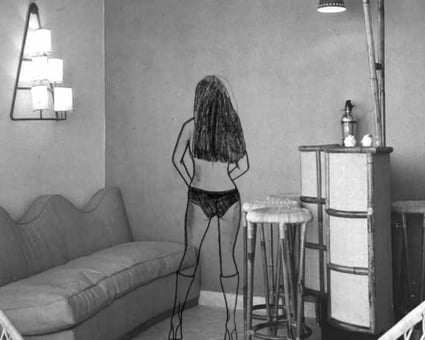
© » KADIST
Marwa Arsanios
I’ve heard stories (2008) is one of Marwa Arsanios early works. It is a short animated film staging a story that took place at the Carlton hotel in Beirut. This work is the first part of a longer project on this iconic building.

© » KADIST
Kristen Morgin
Jeep Comics is based on the second of only two issues published by RB Leffingwell and Company in 1944–45. Though largely unknown, their protagonists, Jeep and Peep, embody the ethos of “Golden Age” comic books in which magically empowered heroes triumph over evils to boost patriotic enthusiasm.

© » KADIST
LaToya Ruby Frazier
LaToya Ruby Frazier is an artist and a militant; her photos combine intimate views of her relation with her parents and grandparents with the history of the Afro-American community of Braddock, Pennsylvania, where she grew up and where her family still live. She reports upon the decline of this steel-producing town, which was once prosperous and where the local population today is devastated by poverty, unemployment and health problems linked to pollution. The town has currently closed the hospital which increases unemployment and makes access to treatment complicated for the residents of one of the most polluted towns in the USA.
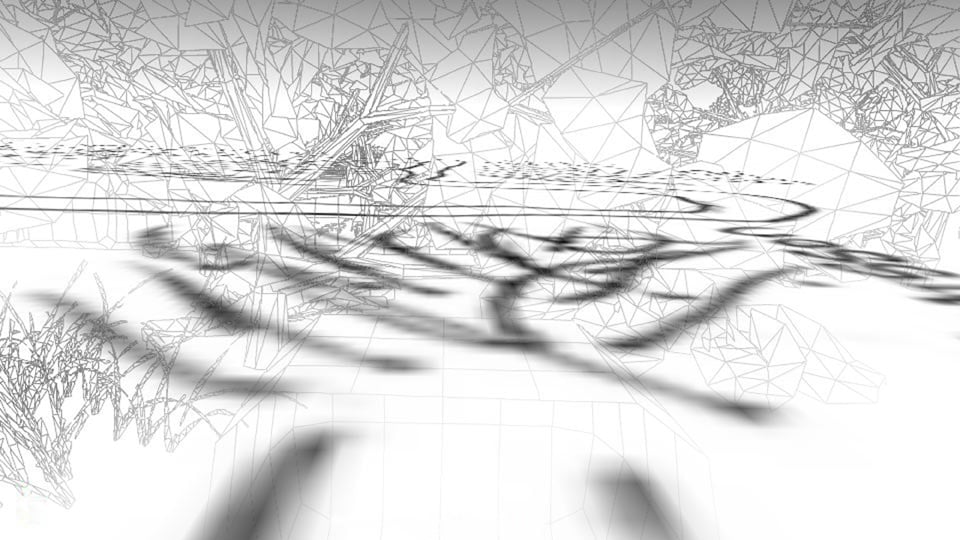
© » KADIST
Hayoun Kwon
Lack of evidence is the account of a Nigerian called Oscar exiled in France, which confronts a historical and social reality with a personal and intimate testimony. Taking as a point of departure Oscar’s request for asylum in France, this fictional document is a peregrination on the different levels of the reconstitution of memory and the subjectivity of its interpretation. Oscar’s legal testimony reveals a dramatic reality taking place in Nigeria, where family executions still exist in the case of having twins who are considered a ‘diabolical off-spring’.
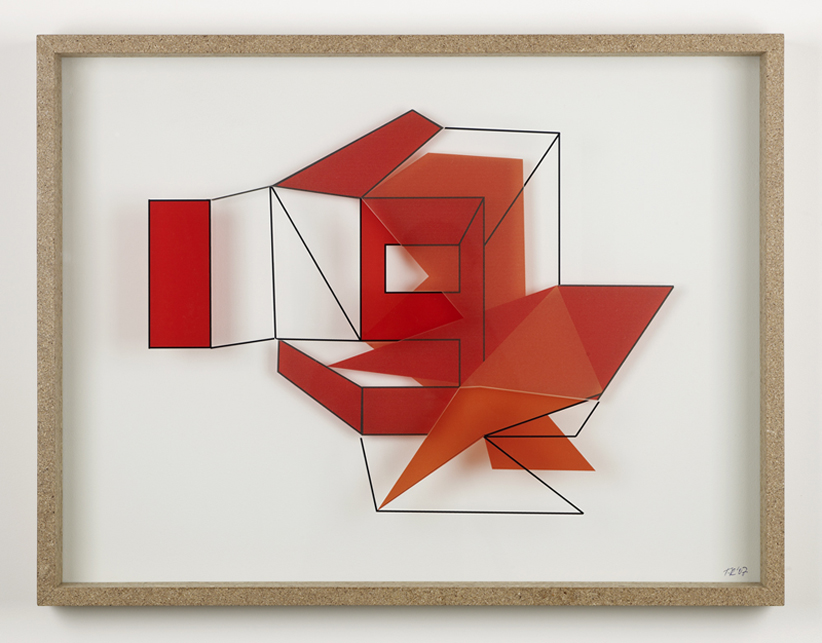
© » KADIST
Tobias Rehberger
Drawing & Print (Drawing & Print)
9’oclock (my time is not your time) pertains to a series consisting of three numbers: 5, 10 and 11 works were made for the exhibition “Signs and messages from modern life” at the Kate McGarry Gallery in 2007. The notion of time is a recurring theme in Tobias Rehberger’s work. We can recall the exhibition ‘Night Shift’ at the Palais de Tokyo ( Paris) in 2002 where the works could be seen only from the angle of the sun, exploring the relationship between day, night, and other natural cycles like the sun and moon, life and death.

© » KADIST
Michelle Handelman
In Dorian, a cinematic perfume, video is used as a community gatherer, a tool to speak about particular subcultures, in this case the trans-gender drag queen New York community, past and present. Developed from a literary work, it deconstructs notions of narrative forms, styles and conventions. It is a hybrid piece, an example of the elasticity of the medium.

© » KADIST
Simon Starling
Invited in 2007 to the Museum Folkwang in Essen (Germany), Simon Starling questioned its history: known for its collections and particularly for its early engagement in favor of modern art (including the acquisition and exhibition of works by Cézanne, Gauguin, Van Gogh, Matisse), then destroyed during the Second World War, the museum was pillaged for its masterpieces of ‘degenerate art’ by the nazis. Starling found photographs of a hang dating back to 1929, taken by Albert Renger-Patzsch, the German New Objectivity photographer. Firstly, he researched the artworks that were presented then which for the most part had been restituted or acquired by private collectors after the war.

© » KADIST
Michael Landy
H.2. N. Y Skeleton of the Dump revolves entirely around the performance “Homage to New York” (1960), of the Swiss artist Jean Tinguely (1925-1991), during which the machine built by the artist in the gardens of the Museum of Modern Art (MOMA) had to self-destruct itself in 27 minutes, but, in the end, it had to be finished off by firemenbeing called in after it erupted in flames. Since the discovery of Jean tinguely’s retrospective at the Tate Gallery in London, in 1982, Michael Landy spent two years researching and sketching (charcoal, oil, glue, ink) from his previous research carried out at Museum Tinguely in Basel, and at the MOMA in New York.

© » KADIST
Paul McCarthy
Memory Mistake of the Eldridge Cleaver Pants was created for the show Paul McCarthy’s Low Life Slow Life Part 1 , held at California College of the Arts’s Wattis Institute in 2008 and curated by McCarthy himself. In homage to an influence in his early career, McCarthy attempted to reconstruct a pair of pants worn by Black Panther revolutionary Eldridge Cleaver in a picture that appeared in Rolling Stone magazine in the 1970s. But in the process, McCarthy misremembered their original design of the pants, which had black outer panels and white inner panels in white, and left a black shape highlighted in the crotch area.
Hayoun Kwon
Born in 1981 in Seoul, South Korea Lives and works in Paris and Nantes Hayoun Kwon was born in South Koera in 1981 and moved to France in 2011 to pursue her studies at the Nantes School of Art and Le Fresnoy, where she presented the video Lack of evidence for her final diploma...
LaToya Ruby Frazier
LaToya Ruby Frazier was born in 1982 in Braddock, Pennsylvania (USA)...
Eric Baudelaire
Currently based in Paris, Franco-American artist Eric Baudelaire has developed an oeuvre primarily composed of film, but which also includes photography, silkscreen prints, performance, publications and installations...
Tobias Rehberger
A student of Martin Kippenberger, Tobias Rehberger emerged in the 1990s as one of the major artists of the younger generation in Germany and one of the most active on the international stage...
Paul McCarthy
- location: Los Angeles, California
- year born: 1945
- gender: male
- nationality: American
- home town: Salt Lake City, Utah
Marwa Arsanios
Marwa Arsanios is born in 1978 in Washington, United-States...
Simon Starling
- location: Copenhagen, Denmark
- year born: 1967
- gender: male
- nationality: British
- home town: Epsom, United Kingdom
Michael Landy
- location: London, United Kingdom
- year born: 1963
- gender: male
- nationality: British
Michelle Handelman
Michelle Handelman’s video, installation, live performance, and photography works analyze the human sublime in terms of its excess and dullness, providing a sneak peek into a jewel thief’s therapy sessions or following the life of a famous drag queen who experiences her own narcissistic destruction due to her increasing fame...
The Atlas Group
The Atlas Group is a research and artistic project founded by Lebanese artist Walid Raad in 1999...
-
1990-1999
The Atlas Group
1991This image is an extract from a notebook in the archives of doctor Fakhouri that lists the cars that have been used for bombs between 1975 and 1991...
-
2000-2009
Tobias Rehberger
Drawing & Print
2007(Drawing & Print) 9’oclock (my time is not your time) pertains to a series consisting of three numbers: 5, 10 and 11 works were made for the exhibition “Signs and messages from modern life” at the Kate McGarry Gallery in 2007...
Simon Starling
2007Invited in 2007 to the Museum Folkwang in Essen (Germany), Simon Starling questioned its history: known for its collections and particularly for its early engagement in favor of modern art (including the acquisition and exhibition of works by Cézanne, Gauguin, Van Gogh, Matisse), then destroyed during the Second World War, the museum was pillaged for its masterpieces of ‘degenerate art’ by the nazis...
Kristen Morgin
2008Jeep Comics is based on the second of only two issues published by RB Leffingwell and Company in 1944–45...
Paul McCarthy
2008Memory Mistake of the Eldridge Cleaver Pants was created for the show Paul McCarthy’s Low Life Slow Life Part 1 , held at California College of the Arts’s Wattis Institute in 2008 and curated by McCarthy himself...
Michelle Handelman
2009In Dorian, a cinematic perfume, video is used as a community gatherer, a tool to speak about particular subcultures, in this case the trans-gender drag queen New York community, past and present...
-
2010-2019
Eric Baudelaire
2011In a society saturated by images, Eric Baudelaire is interested in political events that have not found their representation...
LaToya Ruby Frazier
2011LaToya Ruby Frazier is an artist and a militant; her photos combine intimate views of her relation with her parents and grandparents with the history of the Afro-American community of Braddock, Pennsylvania, where she grew up and where her family still live...
Hayoun Kwon
2011Lack of evidence is the account of a Nigerian called Oscar exiled in France, which confronts a historical and social reality with a personal and intimate testimony...
